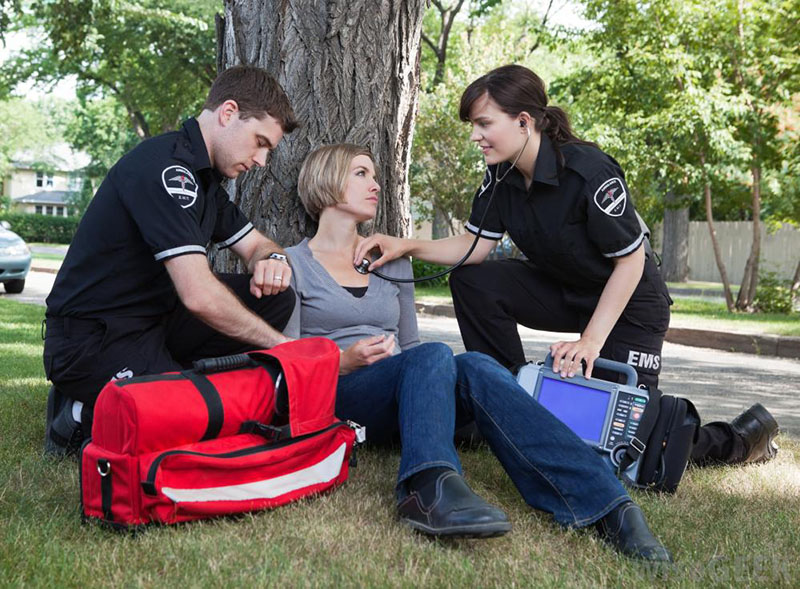The world of emergency medical services (EMS) is an important and valuable career that offers a lucrative career that revolves around helping people and providing vital healthcare. This field has tremendous growth potential and there is a huge demand for skilled professionals. In this post, we’ll take you through the steps to become an EMT or paramedic, examining the different training options available, including DSHS approved EMS training courses.
Understanding the Function and Role of EMTs Paramedics
First responders Emergency Medical Technicians and Paramedics provide prompt medical care in an emergency situation. They are specially trained to assess patients, administer medical procedures, as well as transport patients safely to medical facilities for further care. Paramedics and EMTs play an essential role in stabilizing patients in difficult situations, deciding in split-seconds, and providing compassionate treatment during times of need. For more information, click How to Become EMT

Step 1: Become an EMT
To become an EMT You must be able to complete the necessary education and training program that may differ depending on the certification level you wish to achieve. There are three levels to EMT certification are available:
1. EMT-Basic: This is a certification at the entry-level and will require between 100 and 150 training hours. EMT-Bs are certified to provide medical basics which includes CPR, bleeding control, and the basic management of airways.
2. EMT-Intermediate (EMT-I) EMT-I needs more training and may differ from state to state. In certain states EMT-I is integrated with EMT-B. In others, it takes between 200-400 hours of instruction, including an increase in medical knowledge and intravenous therapy.
3. EMT-Paramedic: This is the most advanced level of EMT certification. It requires a rigorous training lasting between 1,000 and 1 800 hours. Paramedics can carry out advanced medical procedures like administering medication or interpreting EKGs as well as advanced airway management.
Step 2: Applying for Paramedic Certification:
If you’re interested in becoming a paramedic, you must first go through the EMT-B or EMT-I level, and then gain some hands-on experience. After that, you can apply for a paramedic certification program that typically takes between one and two years to complete. During this comprehensive course, you’ll be immersed in complex medical subjects and develop the skills and knowledge needed to manage critical situations in a professional manner.
Learn more about EMT Training Options
When you’re looking for EMT training, you have many options dependent on the level of certification you wish to achieve. EMT courses are often offered by medical trade schools and community colleges at all levels. The programs provide a mix of teaching in the classroom, hands-on training and experiences in field and clinical settings.
Universities and colleges offer EMT programs for the EMT/Paramedic Level, if you are looking for an in-depth and comprehensive EMT training that leads to an undergraduate degree. These programs will help you gain the most thorough understanding of emergency medicine. This will enable you to make better medical decisions and care for patients.
Step 4: You must ensure DSHS approved EMS training:
For students who are interested in becoming EMTs and paramedics it’s crucial to ensure that the training course you select is DSHS accredited. The Department of State Health Services (DSHS) recognizes EMS courses for training to ensure that they meet high standards of education and competency. You can be assured of getting the highest quality education by registering in a DSHS accredited EMS training program.
Becoming an EMT or paramedic is an extremely rewarding and well-respected career choice. EMTs paramedics, EMTs and other emergency responders play an a vital part in providing medical treatment and saving lives in emergencies. For aspiring EMTs or paramedics who want to start this life-saving adventure they must finish all the required education and training programs. The applicants can choose from a number of EMT programs, depending on the certification level they wish to obtain. These include community colleges, medical schools and university courses.
It is important to look at the available training options and be sure the EMS course you select is approved by DSHS. This will guarantee that you’re receiving an excellent education that meets all the standards required to obtain EMT certification as well as paramedic certification.
As the demand for qualified emergency medical professionals is on the rise as the demand for emergency medical professionals continues to increase, joining the field of EMS provides a wealth of job opportunities and the opportunity to make a a profound impact on the lives of those around you. You can start your career with the position of an EMT or move towards paramedic status. Your dedication to providing vital medical care is rewarded with an exciting career.